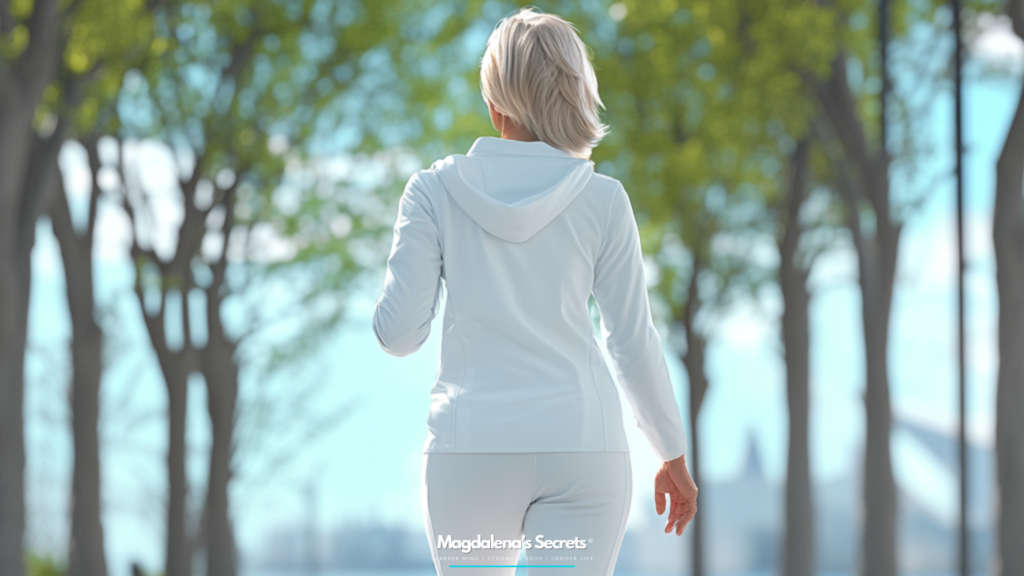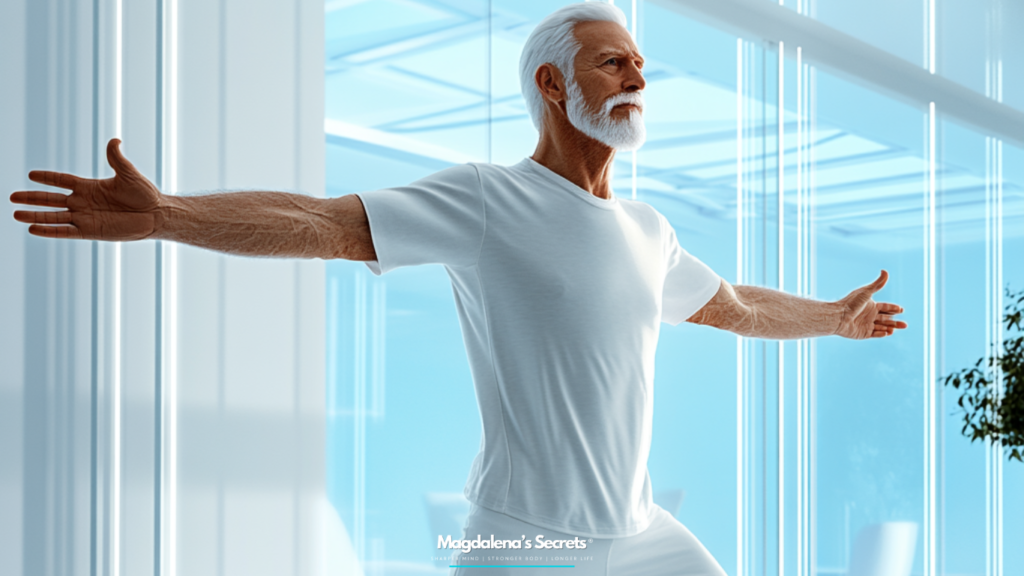In our modern world of high-intensity workouts, cutting-edge biohacking, and flashy gym routines, it’s easy to forget that one of the most powerful health tools available to us requires no equipment, no gym membership, and no complex technique. Walking — the most basic human activity — is increasingly being recognized as a cornerstone of longevity, metabolic health, and graceful aging.
Walking: The Most Underrated Exercise
As we age, the body craves movement — not necessarily explosive or high-impact workouts, but consistent, sustainable activity that promotes circulation, joint mobility, muscle maintenance, and mental clarity. Walking ticks all these boxes.
Unlike many forms of exercise that may become challenging or even harmful in later years, walking remains safe and accessible for virtually all fitness levels. It’s gentle on the joints, helps maintain bone density, supports cardiovascular health, and aids in weight regulation.
Even better, it has profound effects on the brain, improving mood, memory, and lowering the risk of cognitive decline.
But walking isn’t just for those in their golden years. Starting the habit early ensures you’re conditioning your body and mind for a long and resilient life.
The Post-Meal Walk: A Metabolic Game-Changer
One of the most powerful — yet often overlooked — health habits is walking for at least 10 minutes after each meal. Why is this so important?
After eating, especially carbohydrate-heavy meals, our blood sugar levels naturally rise. If glucose levels spike too high, the body reacts with a surge of insulin to bring them back down — a pattern that, when repeated regularly, contributes to insulin resistance and increases the risk of type 2 diabetes, weight gain, and cardiovascular issues.
Walking post-meal acts like a buffer. It encourages muscles to uptake glucose for energy, reducing the need for a large insulin response. Research consistently shows that just 10 minutes of light to moderate walking after eating significantly lowers glucose spikes, improves insulin sensitivity, and contributes to better metabolic control.
In a world where metabolic dysfunction is the root of so many chronic illnesses, this one habit could be a true game-changer.
Walking and Longevity
Studies have long linked regular walking to longer life expectancy. For instance, one large-scale study found that people who walked at a brisk pace had up to a 24% reduced risk of early death. Even more impressively, longevity benefits were seen regardless of how much formal exercise participants did — showing that consistent daily movement matters more than occasional intense workouts.
Walking is also a powerful anti-inflammatory activity. Chronic inflammation is a silent contributor to nearly every age-related disease — from Alzheimer’s to arthritis. By moving the body regularly, we help reduce inflammation markers, improve immune function, and support the body’s natural repair processes.
The Origin of the 10,000 Steps Standard
The now-famous “10,000 steps a day” recommendation actually has an interesting origin. It dates back to 1960s Japan, when a Japanese company named Yamasa created a pedometer called the “Manpo-kei,” which translates to “10,000-step meter.” The number wasn’t scientifically chosen, but rather for its simplicity and memorability.
However, modern science has caught up, and while 10,000 isn’t a magic number, it is a very solid target. Research suggests that benefits begin to appear with as few as 7,000 steps per day, but the health advantages continue to increase — especially for heart health and weight maintenance — up to around 10,000.
What’s perhaps more important than the number itself is the consistency and distribution of those steps throughout the day.
Final Thoughts
Walking is the quiet hero of the wellness world. It doesn’t make headlines with dramatic transformations or six-pack abs, but it offers something much deeper: a path to sustainable health, emotional balance, and longevity.
Whether it’s a morning stroll, a midday walk in nature, or a post-dinner movement ritual, incorporating more walking into your daily routine is one of the most effective — and enjoyable — investments you can make in your long-term well-being.
So next time you finish your meal, don’t just sit — walk. Your future self will thank you.




